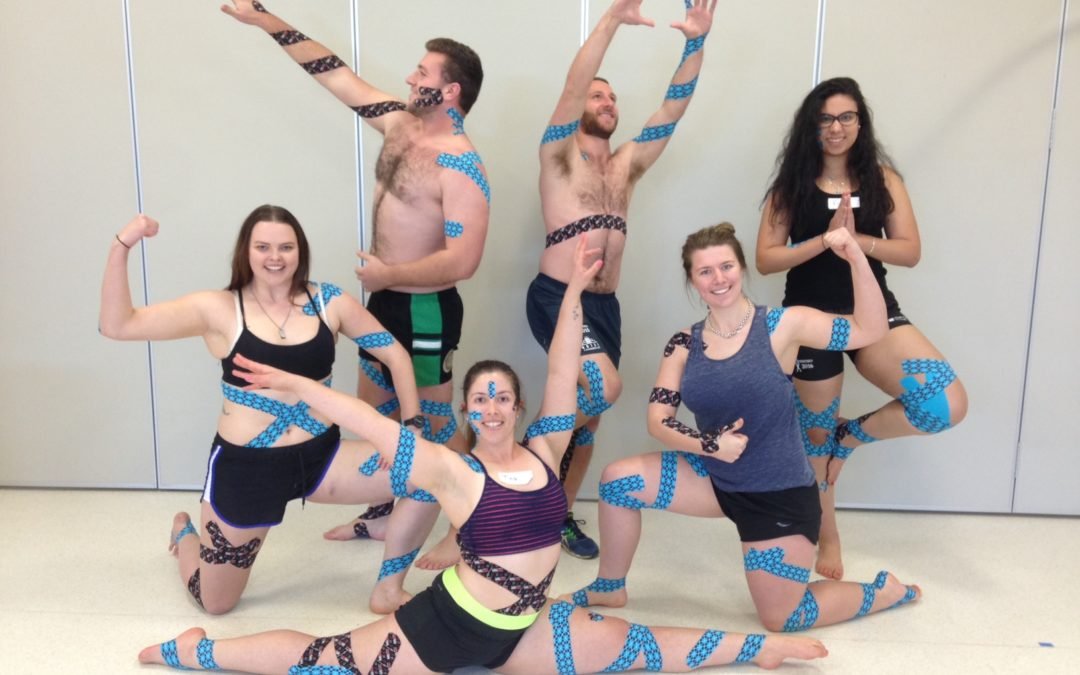RockTape kinesiology taping courses

Kinesiology tape is a divisive subject. The mention of it tends to send some physio-centric social media channels into meltdown! But I believe that many therapists have formed opinions of kinesiology tape based on outdated claims that have their origins in the 1970s. We know a lot more about pain science and the role of touch since then, but unfortunately many of the original inaccurate hypotheses still sour therapist’s opinions of the use of kinesiology tape. In our RockTape courses, we base our curriculum on the most up-to-date research in both the pain science and kinesiology tape fields.
An enormous amount of research has been published that demonstrates that when people are in pain, their sensory awareness of the affected body part can be distorted. This is where we believe the main benefit of RockTape is achieved. It is theorized that by stimulating the mechanoreceptors in the skin and subcutaneous tissue, the tape can provide the brain with additional input regarding the body’s position in space, and also potentially encourage the patient to be more cognisant of this area in general. This can be a perfect adjunct to the remainder of the physiotherapy intervention- exercise, education and manual therapy as required. If people are in less pain and more aware of their body, better movement should be the outcome. Kinesiology tape is never a treatment in isolation. It can be a perfect adjunct to your usual patient care.
The RockTape courses teach a framework of concepts, rather than a recipe-based approach to taping. This is because there isn’t one application that is going to be the “right” one for any given patient. Each application needs to be tailored to suit the patient in front of you and this is easy to do if you understand the principles underpinning the modality. As such, we start off with teaching the “rules” of how to keep the tape in place for 3-5 days and then follow with loads of practice time to hone these skills in all areas of the body. Our presenters are all experienced clinicians working in general practice and as such, can add lots of clinical examples of when they have found certain applications to be most helpful.
The courses also include taping for swelling, postural cueing, pregnancy-related symptoms and taping to aid scar management. We also introduce the concept of taping fascial chains as this can assist people to better link their movements along a kinetic chain. Throughout the course we emphasize that aside from the “rules” of application that pertain to keeping the tape in place, there are no rules in terms of where to apply the tape- lateral thinking and clinical reasoning are highly encouraged! Of course, we also acknowledge that there are also times when the best tool for the job may be a brace or rigid tape, as no modality is right for everybody.
Overall, our courses are a fun and interactive day of learning with the majority of time being spent practicing taping techniques. This means that the RockTape concepts can be seamlessly integrated into clinical practice immediately on returning to the clinic, without having to refer to overly-complicated textbooks. We aim to de-mystify kinesiology tape!
